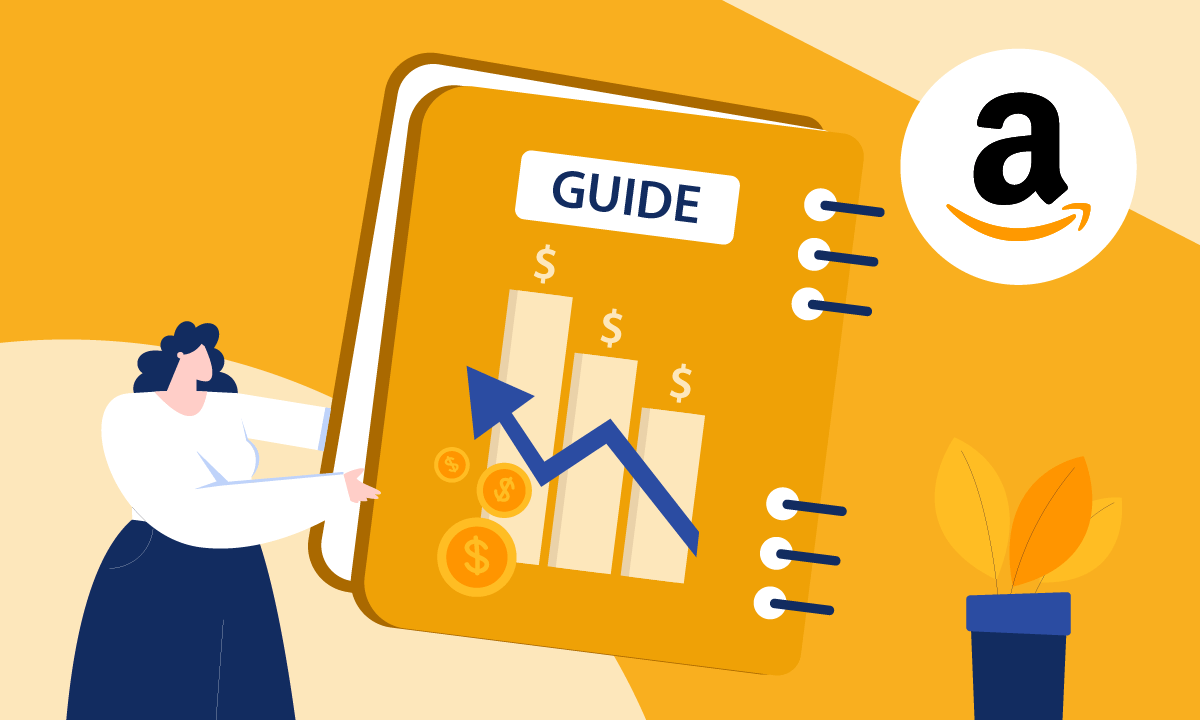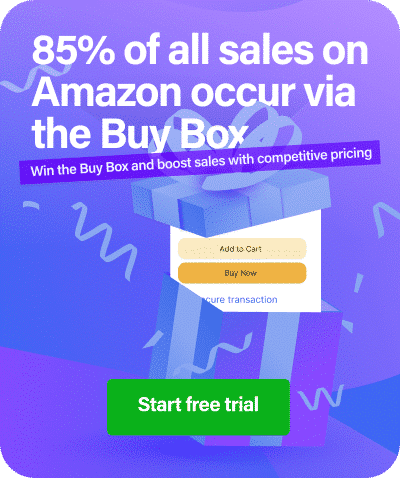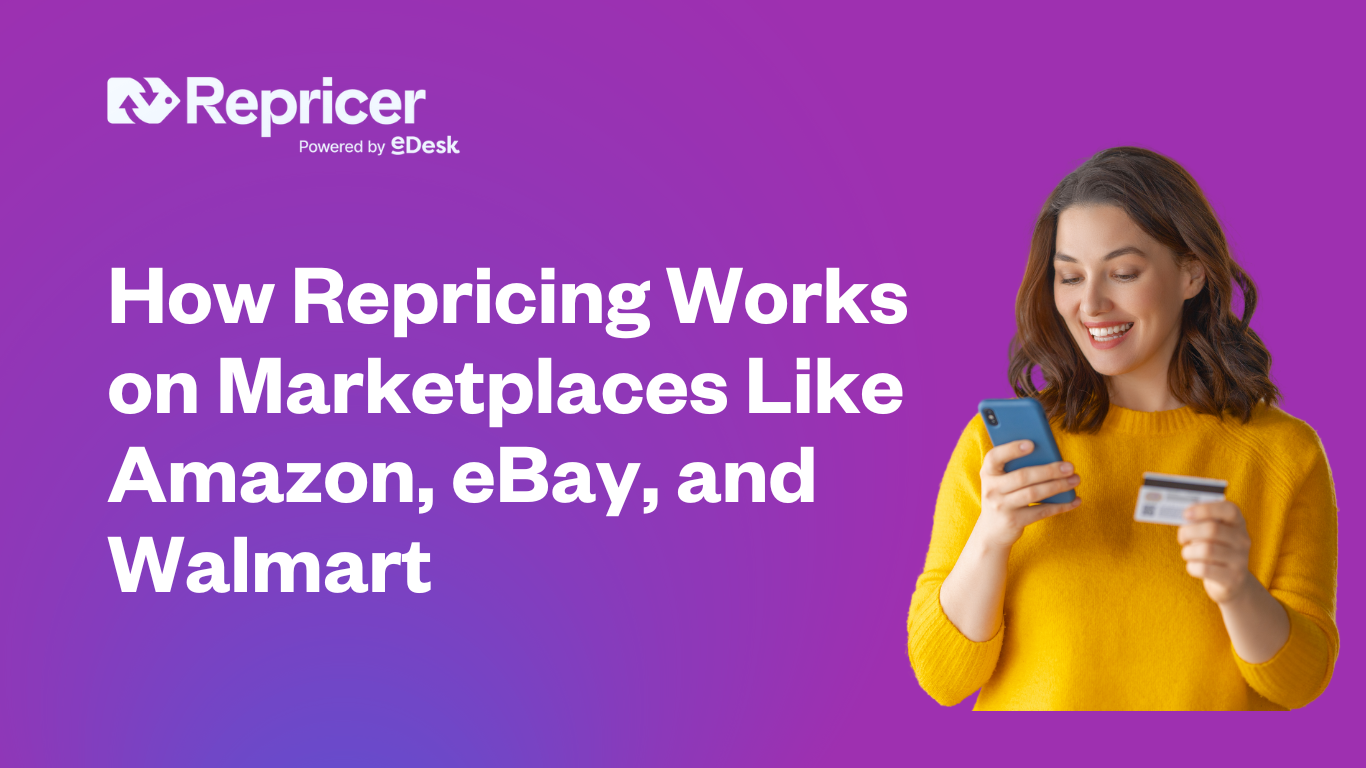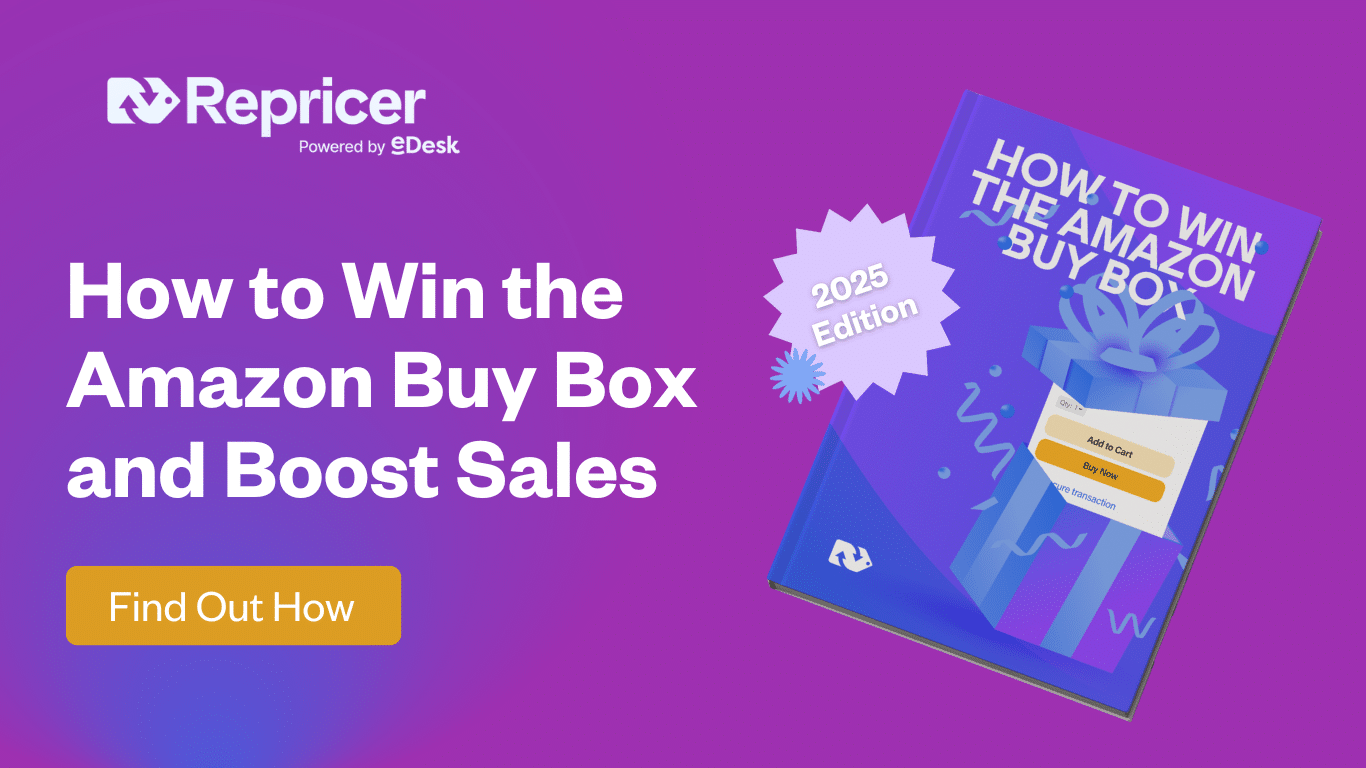Amazon adjusts prices on its products, on average, once every ten minutes.
That alone should be enough to convince you that dynamic pricing is crucial, but if not, consider this: there are 9.7 million sellers on Amazon, offering a total of 310 million products, which means there’s a lot of competition out there. Winning the all-important Buy Box often comes down to pricing, so it’s really important to get your strategy right.
That’s easier said than done, though. There are lots of different factors to consider when putting together a dynamic pricing strategy — and not all repricing tools on the market always take them all into account. Amazon’s own free repricing tool, for example, tends to be a blunt instrument that can’t always keep up with the complexities of the market. We’re pretty confident that Repricer can, though. Here’s a look at the different facets of an effective pricing strategy.
Setting minimum and maximum prices
The most basic part of your pricing strategy is just setting minimum and maximum prices for each product. This is a feature you’ll find in every repricing tool, but it really is important to get these initial price points right.
Your minimum price should be set so that you’ll never be selling below margin — you don’t want to end up losing money. Setting a maximum price might seem unnecessary, but without one you could fall prey to predatory pricing practices by other sellers, who’ll push their prices up to artificially high levels to encourage you to match them, then suddenly undercut all of their competitors in order to secure the Buy Box.
Amazon does have safeguards in place to try to prevent that kind of behaviour, but it’s worth setting your own upper limit to prevent it happening to you. In Repricer, you import your product costs to automatically determine your minimum and maximum price levels, and then configure your settings to ensure you’re working within the margins you want.
Chasing vs optimising
Your pricing strategy should be adaptable, to make sure you’re maximising your profits. If you’re chasing the Buy Box, for example, your repricing tool should be working to lower your product prices without cutting into your margins.
But if you’ve already attained it, then your repricing tool should switch to incrementally raising your prices, maximising your profits while keeping the Buy Box. That’s how Repricer’s strategy works, but not all repricing tools will make that switch — and focusing only on keeping your prices low could mean losing out in the long run.
Picking your competitors
Not all competing sellers are created equal. When fine-tuning your pricing strategy, you should know who your top competitors are — and then decide whether, and how, to compete with them.
Depending on whether they’re Fulfillment by Merchant (FBM), Fulfillment by Amazon (FBA), or Seller Fulfilled Prime (SFP) sellers, they’re more or less likely to win the Buy Box, so using the same rules to compete with all of them could mean missing out on profits.
Competing against Amazon itself is likely to be a losing battle, and you’ll also want to avoid trying to compete on price with a seller based in China with hundreds of bad reviews attached to their profile. Being able to selectively choose your competitors could make all the difference in how competitive your business really is.
Adjusting for momentum
Surge pricing isn’t just for taxis. When demand for your products is high and your sales volume is rising, you should consider raising your prices to attain a higher profit margin. Conversely, if demand and sales volume are low, it might be sensible to drop your prices.
There are lots of different reasons why sales volumes will fluctuate, but we’ve really seen a lot of variation caused by seasonal shifts. Comparing YoY data from 2022 and 2023, Repricer customers experienced 53% growth during the 2023 holiday season, which just goes to show how important it is to get this stuff right.
Competing beyond the Buy Box
Not all Amazon listings display the Buy Box. When Amazon’s algorithm determines that none of the sellers of a particular option qualify for the Buy Box, Amazon will suppress it, removing the “Buy Now” and “Add To Cart” options completely. Customers will instead need to click “See All Buying Options”, and choose a seller that way.
It goes without saying, but in that case, customers will almost always choose the cheapest option — not least because Amazon displays all the sellers sorted by price, with the cheapest seller at the top.
Ideally, though, you want to avoid Buy Box suppression whenever possible. Repricer can help with that by making sure you stay competitive, not least by making sure your product prices are synchronised across all sales platforms.
Avoiding price wars
It can be tempting to get drawn into a price war, but in our experience, it’s almost never worthwhile. By repeatedly undercutting one another, sellers can destroy their own profit margins — and, while they’re focusing on beating out a competitor solely on price, they can also stop paying attention to other aspects of their business.
Instead, we’ve found that the best strategy is to bow out early. When you realise that a price war is beginning, just don’t engage: instead, wait for the war to end and prices to rise, then start repricing again at a level that makes sense.
All of that, incidentally, is something Repricer can do for you automatically.
Accommodating bulk orders
If you order bulk discounts for commercial sellers, your dynamic pricing strategy can start getting even more complicated. Amazon lets each seller set five different price points for their products, based on five different unit quantities. That’s a lot of different prices to juggle.
Again, though, this is something Repricer can do for you. Using sophisticated logic, all of that repricing — based on sales volume, competitor prices, and every other factor we’ve been talking about — can happen seamlessly, without you needing to worry about it or having it cut into your profits.
Getting analytical
How do you know if your pricing strategy is paying off? Any repricing tool worth its salt should be able to produce detailed reports about what’s been happening, including:
- How many times you won the Buy Box
- How many of your products are almost at the Buy Box
- Who your top competitors are
- How much of your revenue was attributed to repricing activity
- How many orders were profitable, and how many weren’t.
Repricer can do all of that, as well as giving you the ability to test your strategies on real-time data before going live and changing real prices.
Picking the right tool
Our Repricer tool implements all of the above features and more. Visit our website now to learn more about Repricer and sign up for a free trial.





